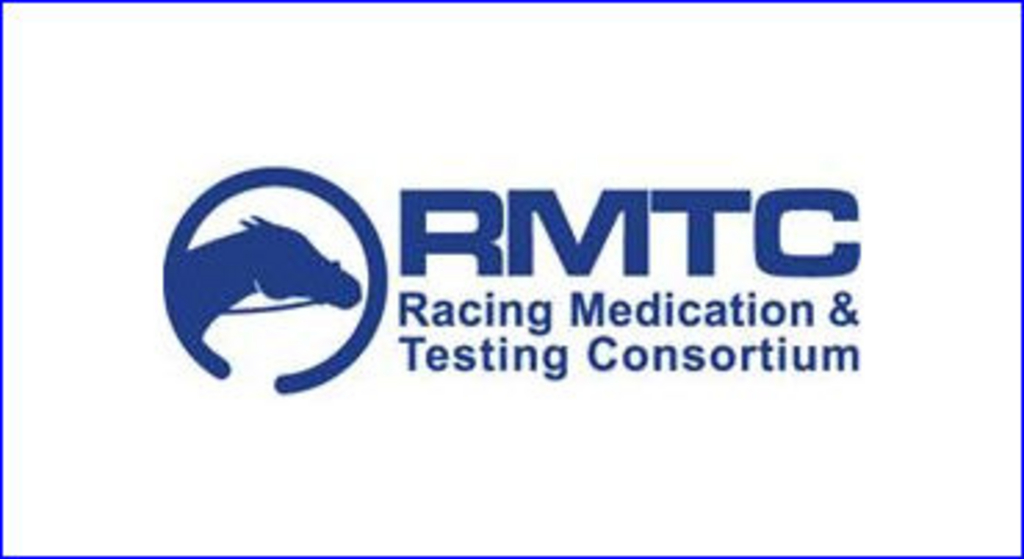
Based on the recommendation of its Scientific Advisory Committee, the Racing Medication and Testing Consortium Board of Directors has recommended scientifically-identified withdrawal guidelines and plasma thresholds for
the short-acting bronchodilator glycopyrrolate, the muscle relaxant methocarbamol and four anabolic steroids, three of which are endogenous (naturally occurring) in the horse.
A recommendation for the non-steroidal anti-inflammatory medication firocoxib has also been approved pending resolution of one outstanding issue.
“Administration studies on these medications were developed and funded by the RMTC over the past few years in an effort to provide horsemen and practicing veterinarians with withdrawal guidelines that will enable the therapeutic use of these medications without compromising the integrity of racing competition or the welfare of our human and equine athletes,” said Dr. Rick Arthur, chair of the RMTC Scientific Advisory Committee and equine medical director for the California Horse Racing Board.
“The results of these studies have been eagerly anticipated by the industry, and we will continue to conduct important research on other therapeutic medications that are commonly used in managing the health of racehorses.”
The board made these recommendations at its meeting at the University of California-Davis on October 12, 2010.
The specific recommendations are as follows:
- Glycopyrrolate: Threshold concentration of 3.5 picograms/ml in serum or plasma, which regulates a 24-hour withdrawal guideline for a single, intravenous total dose of 1 mg.
- Methocarbamol: Threshold concentration of 1 nanogram/ml, which regulates a 48-hour withdrawal guideline for a single intravenous dose of 15 mg/kg.
- Firocoxib: Threshold concentration of 40 nanograms/ml in serum or plasma, which regulates a 7-day withdrawal guideline when administered at the FDA-approved label dose, pending a review of clinical effects by the RMTC Scientific Advisory Committee.
- Boldenone: Screening limit no greater than 100 pg/ml in serum or plasma with a confirmatory threshold no greater than 25 pg/ml for all horses regardless of sex, which regulates an 82-day withdrawal time.
- Nandrolone: Screening limit no greater than 100 pg/ml in serum or plasma with a confirmatory threshold no greater than 25 pg/ml for geldings, fillies and mares, which regulates a 35-day withdrawal time. Male horses other than geldings will not be tested for nandrolone in blood.
- Stanozolol: Screening limit no greater than 100 pg/ml in serum or plasma with a confirmatory threshold no greater than 25 pg/ml for all horses regardless of sex, which regulates a 47-day withdrawal time.
- Testosterone: Screening limit no greater than 100 pg/ml in serum or plasma with a confirmatory threshold no greater than 25 pg/ml for geldings, fillies and mares and a confirmatory limit of 2 mcg/ml for male horses other than geldings, which regulates a 30-day withdrawal time.
In addition, the RMTC board of directors approved a plasma threshold of 10 micrograms/ml for DMSO, which would allow for the use of DMSO as a topical leg paint but would not allow for the oral or intravenous administration of the drug. The board also recommended that DMSO be reclassified by the RCI Drug Testing Standards and Practices Committee to a Class 4 substance when appearing in samples in excess of the threshold concentration.
Based on a report provided by the Scientific Advisory Committee, the RMTC board expects to be able to issue recommendations for acepromazine, pyrilamine, mepivacaine, lidocaine, procaine and butorphanol at its next full meeting in March 2011.
Also at the meeting, RMTC Executive Director Dr. Scot Waterman provided an update on the progress of the RMTC Drug Testing Initiatives Task Force, which has been working toward drug testing quality assurance and laboratory accreditation since its inception in 2008. He noted that before the task force was initiated, only five of the 18 laboratories conducting drug testing on racehorses were accredited to ISO 17025 standards. Dr. Waterman predicted that that number will increase to 11 out of 19 laboratories by the end of 2011. In addition, three additional laboratories have expressed an interest in becoming RMTC-accredited following RMTC Vice Chairman Alan Foreman’s remarks at The Jockey Club Round Table Conference in August.
“We are thrilled with the commissions’ and their laboratories’ response to the challenge laid out by Mr. Foreman as part of his remarks at The Jockey Club Round Table Conference,” said Dr. Waterman. “The successful implementation of this program will improve industry confidence in its laboratory infrastructure and put our labs on par with any in the world.”
In other RMTC business:
- Board members received updates on funded research for several potential doping agents and a progress report on research on corticosteroids.
- Dr. Heather Knych, who was funded by the RMTC post-doctoral research fellowship program, presented a summary of her ongoing corticosteroids research.
- The RMTC will develop a penalty structure for the 2ug/ml threshold limit for phenylbutazone to recommend to the ARCI for their consideration at the next RMTC board meeting.
- Meeting attendees were given a guided tour of the Kenneth L. Maddy Equine Analytical Chemistry Laboratory and a demonstration of the equine treadmill at the UC-Davis Veterinary Medical Teaching Hospital.
“I would like to thank Dr. Scott Stanley and everyone at the Ken Maddy laboratory who helped host our group at this incredible facility,” said RMTC Chairman Dr. Robert Lewis. “We truly appreciated their hospitality and willingness to provide our board members with a unique learning experience.”
(RMTC)

